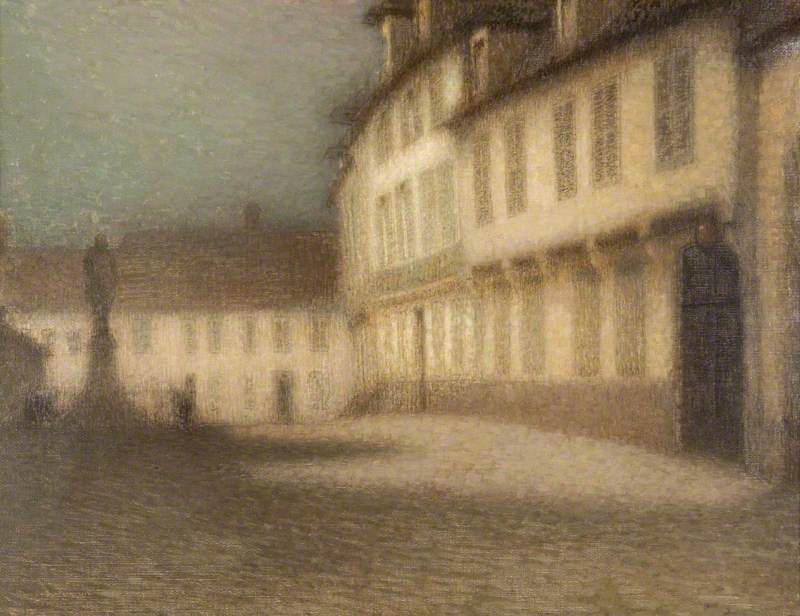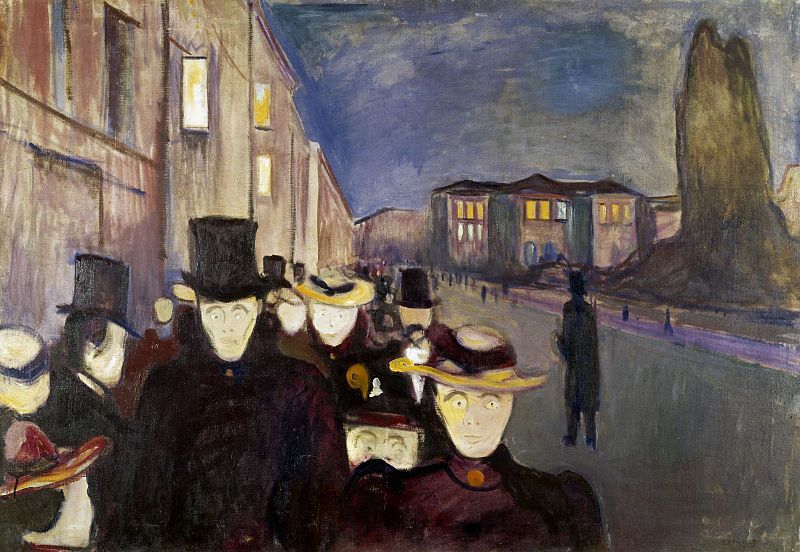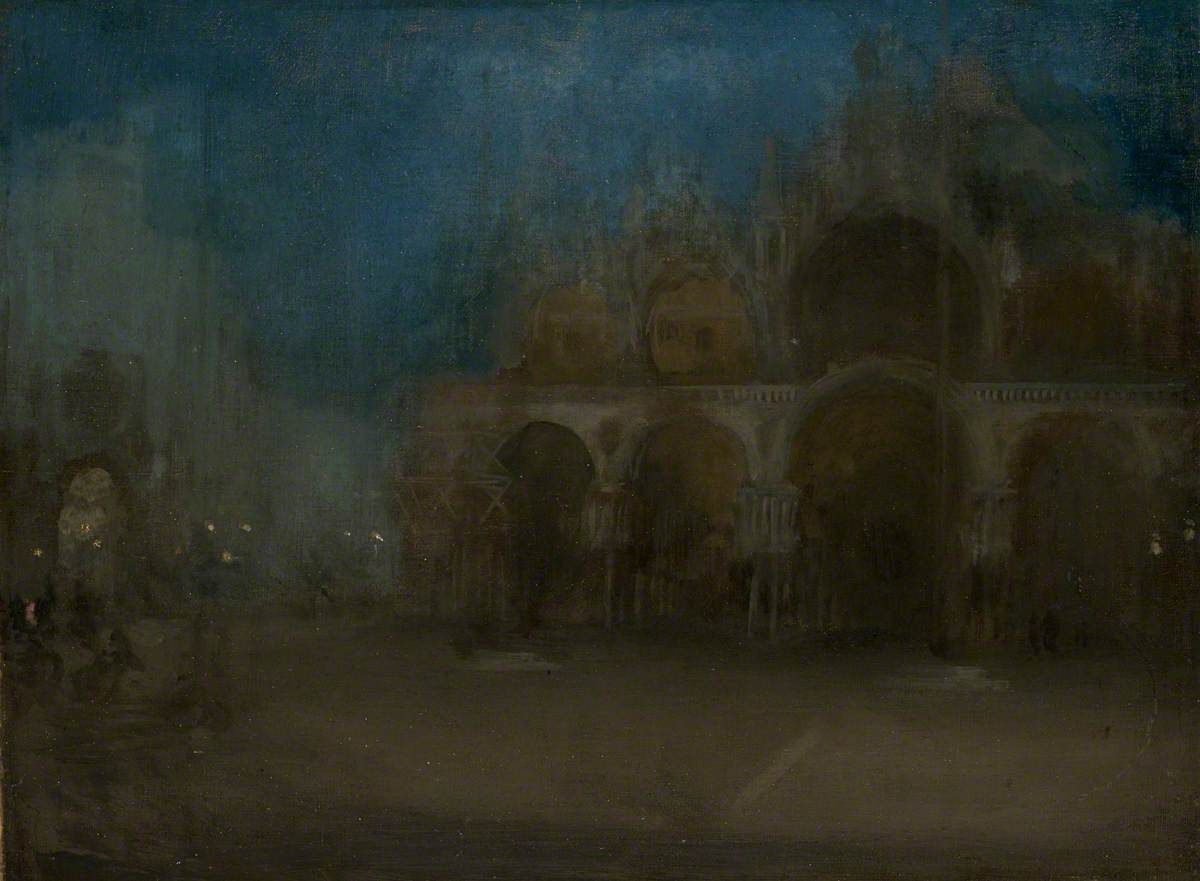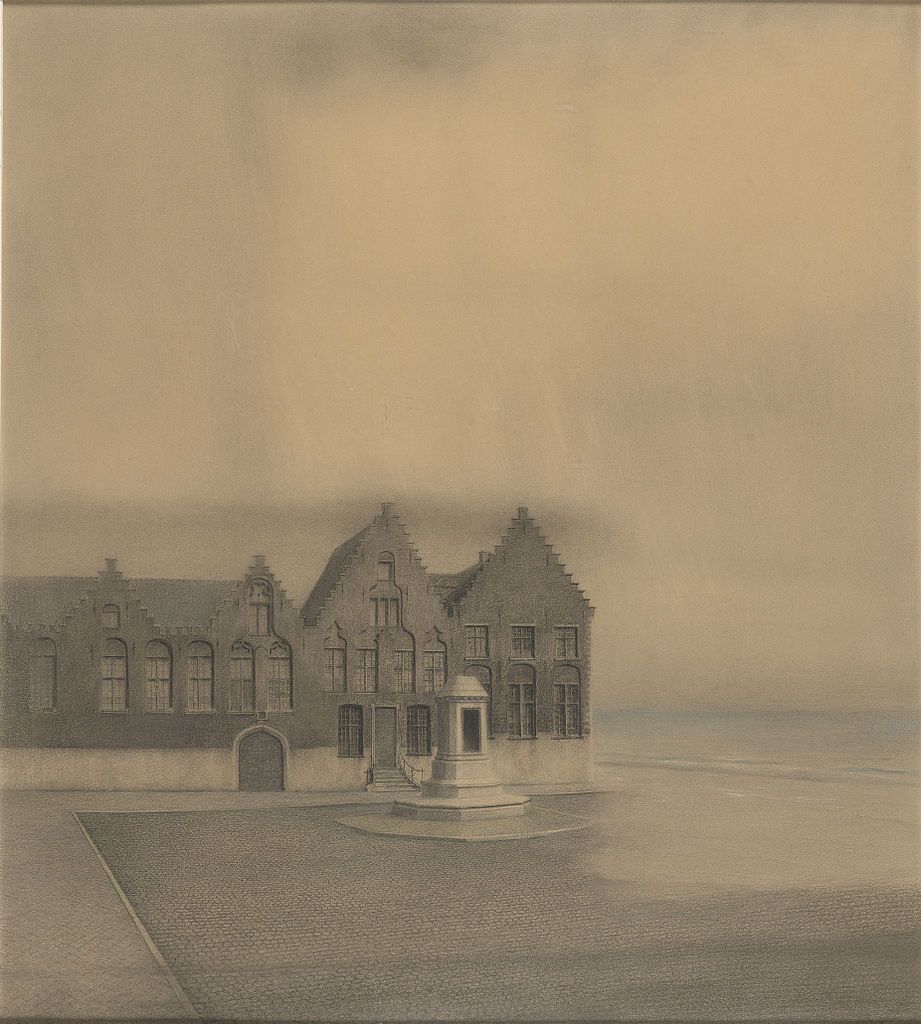The most disconcerting thing about my walks through the centre of Edinburgh at present is the sound of my footsteps. The last time I was home, they barely seemed to exist; drowned out by the hustle and bustle of everyday life in Scotland’s capital. For now, all of that has ceased. The streets are smothered by a blanket of quiet momentarily disturbed as my shoes strike the cobbles. Whenever two groups of people look like they are about to encounter one another in this landscape, they are repelled. A mechanical, magnetic force kicks in to maintain the required (and necessary) social distance. In this time of lockdown, we have entered the age of the “silent city”.
The sight of these streets calls to mind some of the works created by artists associated with the Symbolist movement. The paintings and drawings where the urban landscape is devoid of all activity; frozen forever in a state of emptiness.

Henri Eugène Le Sidaner, A Beauvais Square by Moonlight (1900) Image credit: Glasgow Museums CC-BY-NC
Such works seek to express their rejection of the modern, urban way of life that the population had pivoted towards in the wake of industrialisation; a key theme throughout Symbolist art and literature. To these artists, the modern city was a corrupt place - disease-ridden, joyless; anxiety-inducing. Moreover, they tore at a central tenet of human nature by stripping the individual of identity in place of an anonymous existence amongst tens of thousands, a crowd of identikit and zombie-like faces incapable of true expression or interaction.

Edvard Munch, Evening on Karl Johan Street (1892) Image: Wikimedia Commons
Munch’s Evening on Karl Johan Street is perhaps the most in-your-face example. Here, the crowd stares out at the viewer as you block their path, and consequently the routine mechanics of the city to which they must adhere to. Unlike the masked figures of James Ensor’s paintings, there is no underlying character or personality. The modern world and its demands have expunged these traits entirely.
The “abandoned city” works instead focus on the quiet decay of the towns and centres of activity which failed to keep up with modernity’s relentless pace. To the Symbolists, such places were an antidote - enigmatic, steeped in mystery, reminiscence, and a sense of decay they viewed as beautiful; untainted by the contemporary world forming around them.

James Abbot McNeill Whistler, Nocturne: Blue and Gold — St Mark’s, Venice (1880) Image: National Museum Wales
Venice, its power and wealth diminished by the second half of the 19th century features in Symbolist landscape again and again. A favourite of mine is Whistler’s Nocturne of St Marks Square, in the collection of National Museum Wales. The near monochromatic palette and the obscure figures spread at a distance across the canvas give the scene a timeless, ethereal feeling – they could as well be ghosts; echoes of this place’s thriving past.
Twenty years after Whistler painted St Marks, the Belgian artist Fernand Knopff had returned to Bruges, a city he knew from childhood. Much like Venice, the medieval city’s importance had dwindled, inspiring generations of artists including Rossetti, who expressed his thoughts in verse:
On the water’s face
The current breathes along, but is not stirred.
There is no branch that thrills with any bird.
Knopff’s depictions, although reminiscent of Rossetti’s words were primarily inspired by the writings of George Rodenbach. The novel Bruges-la-Morte uses the landscape of the city as a reflective backdrop for its central characters withdrawal into grief and desolation following the death of his wife. He also made use of his memories from childhood, which he sought to preserve during his visit by wearing opaque glasses. This action, rather than impeding his creativity, allowed the artist to obscure his adult viewpoint, and thus avoid confusing it with the impressions from his youth.

Fernand Knopff, Une ville abandonnée, 1904. Image: Musées royaux des Beaux-Arts de Belgique
The most striking of these works is a pastel drawing of Hans Memling square, entitled Une Ville Abandonnée. Here, Knopff has abandoned representation from life or memory and embraced a Symbolist fantasy. This place has been long forgotten, buildings boarded up, the statue in the centre long since removed from its plinth. Furthermore, a tide is beginning to creep across the square, giving a sense that it is on the cusp of being swept away by the ideal nature.
When I do wander the streets of my city, this is the image that comes to mind most readily when I hear my footsteps, leaving me unsettled. Although not based in reality; being a work of Knopff’s imagination, it is a reminder in such times that our existence is fragile. The physical and societal infrastructures we have created around will not be permanent. All we can hope for is that they are allowed to fade, reshape and evolve over time as the world moves on, rather than be washed away in an instant.